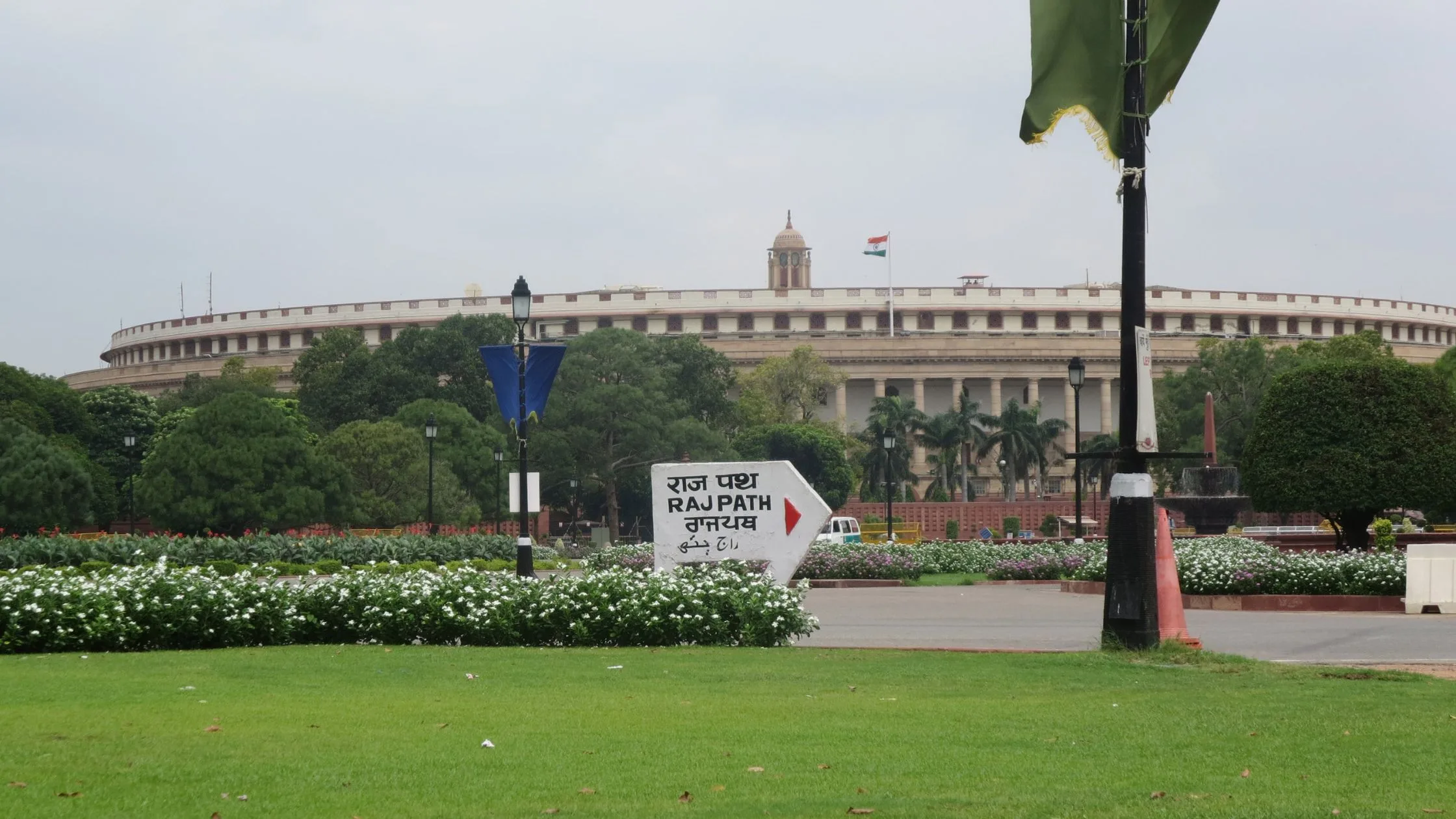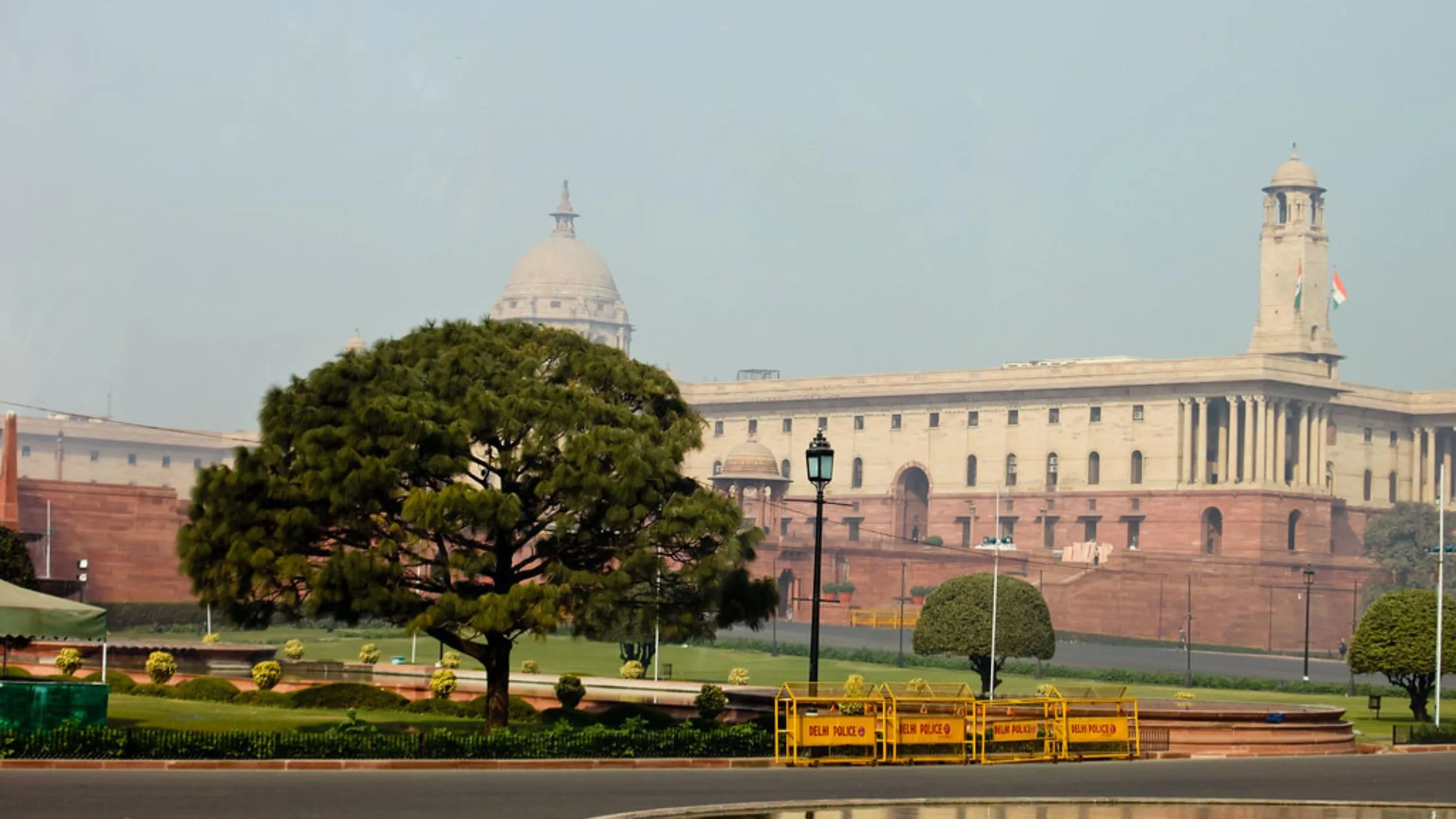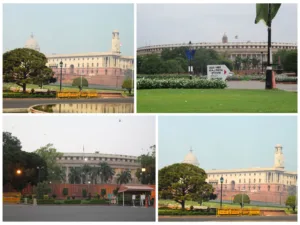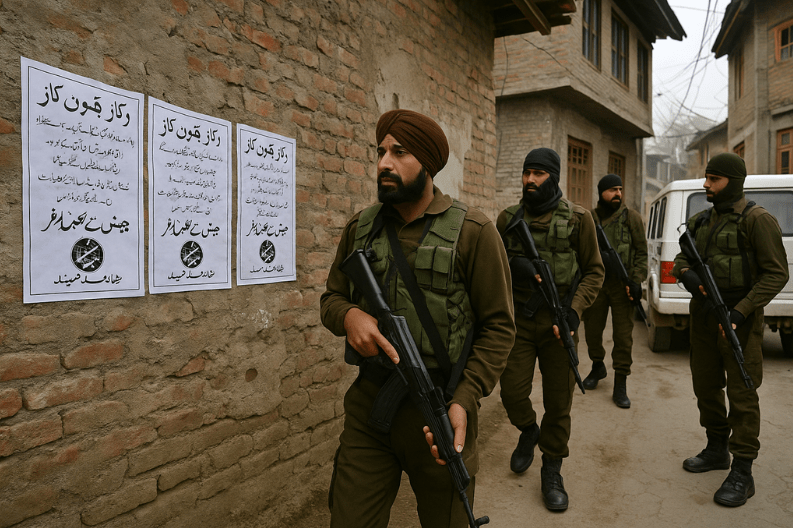The Indian Parliament meets in New Delhi at the Parliament House. The Lok Sabha and the Rajya Sabha are their two houses, representing the lower and the upper houses of India’s bicameral parliament, respectively.
It is situated on Sansad Marg, which crosses Central Vista and is surrounded by the Vijay Chownk, India Gate (All India War Memorial), National War Memorial (India), the Vice President’s House, Hyderabad House, Secretariat Building, Prime Minister’s office and residence, ministerial buildings, and other administrative units of the Indian Government.
It is 750 meters away from Rashtrapati Bhavan. Between 1921 and 1927, the building was created by British Architects Edwin Lutyens and Herbert Baker. It debuted as the seat in January 1927.
History
Its original name was the House of Parliament. British architects Edwin Lutyens and Herbert Baker created it in 1912-1913 as part of a larger project to create a new administrative capital city for India. The Parliament House was built starting in 1921 and finished in 1927.
Prince Arthur, Duke of Connaught and Strathearn, laid the cornerstone in February 1921. The building took five years to complete. On January 18, 1927, Sir Bhupendra Nath Mitra, Member of the Governor-Executive General’s Council and in charge of the Department of Industries and Labour, invited Lord Irwin, Viceroy of India, to dedicate the building.
On January 19, 1927, this building hosted the central Legislative Assembly’s third session. The building, later known as the parliament house, served as the location for both chambers of the Indian Parliament after independence. It is an important symbol of India’s democratic process and architectural heritage.

Description of the Parliament House
The central hall of the Parliament house has a 98-foot diameter circle shape. Given that the Indian Constitution was drafted in the Central Hall of the Parliament complex, it is thought to be a crucial component of the structure.
Lok Sabha, Rajya Sabha, and a library hall are all located in the same building. A garden can be found in the space between these three chambers. Additionally, the building has accommodations for ministers, significant lok Sabha and rajya Sbha officials, chairmen, and parliamentary committees.
Given that the Indian Consitution was created in the Central hall, it is thought to be a crucial component of the Parliament complex. In addition to a library hall, the building houses the Lok Sabha and the Rajya Sabha. A garden is located in the space between these three chambers. Additionally, the building offers accommodations for ministers, significant lok Sabha and Rajya Sabha officials, Chairmen, and Parliamentary committees.

Incidents That Affected the Sansad Bhavan
The 2001 Indian parliament attack was a terrorist attack on the Parliament of India in New Delhi, India, on December 13, 2001. The Perpetrators belonged to Lashkar-e-Taiba (LeT) and Jaish-e-Mohammed (JeM), two Pakistan-raised terrorist organizations.
The attack let to the deaths of six Delhi Police personnel, two Parliament Security Service personnel, and a gardener– a total of nine people– and led to increased tensions between India and Pakistan, resulting in the 2001-02 India- Pakistan standoff.
The armed forces killed five terrorists outside the parliament. The Lashkar-e-Taiba and Jaish-e-Mohammed terrorist groups carried out the attack. As these groups are Pakistani, this led to accusations against Pakistan for sponsoring terrorism.
The incident also prompted India to introduce tougher anti-terrorism laws and improve security measures around government buildings.
The New Parliament House
A new parliament building is currently being built in New Delhi. It is a part of India’s Central Vista Redevelopment Project, which the Indian government launched in 2019.
When finished, it will replace Parliament house, which is currently home o the Indian Parliament. The old structure is directly across the construction site of the new structure.
The new building will be more modern and better equipped to handle the needs of the Indian Parliament. Its design will reflect India’s rich cultural heritage and will be a source of pride for the country.
The construction of the new building is a significant step towards India’s progression and development. It aims on showcasing the country’s commitment to modernization and the preservation of its cultural heritage. It is a symbol of national pride that will undoubtedly draw people’s attention and admiration.
Visiting the Parliament House
In addition, Parliament House is home to a museum dedicated to educating visitors about India’s “democratic heritage,” which dates back to 2500 B.C.
The museum is organized in a very interesting way. It includes a variety of features like sound and light video, big interactive computer screens, and virtual reality.

Although Monday and Sunday are designed as holidays, the museum is open from Tuesday through Saturday from 11 am to 5 pm. Many people come here to take pictures of the Parliament Building because it is such a well-known landmark in Delhi. Adult admission costs Rs. 10; children can come free of charge.
During a visit to Parliament House, tourists can also witness parliament proceedings from the public galleries, subject to certain regulations. This is a unique opportunity to experience the Indian parliamentary system in action.
Conclusion
Visiting Parliament House in India will provide an exclusive insight into how the country’s government functions. It is a chance to witness democracy in action. On top of that, visitors can take a guided tour of the building, which offers insights into the history and architecture of Parliament House. It is a great way to understand the significance of this iconic monument.
Overall, visiting Parliament in India is a culturally enriching experience that provides a deeper understanding of the country’s political system. In a nutshell, a visit to India’s Parliament is a unique opportunity to gain insight into the workings of the country’s government and witness democracy at work. It is a must-visit destination for anyone who wants to witness India’s politics, history, or culture. Don’t miss this one-of-a-kind opportunity.



